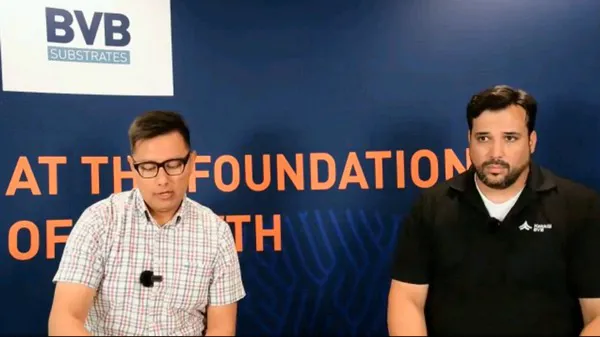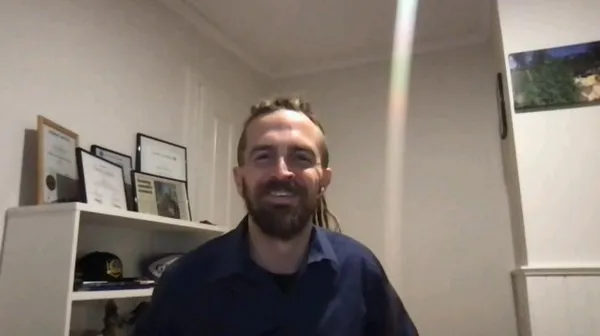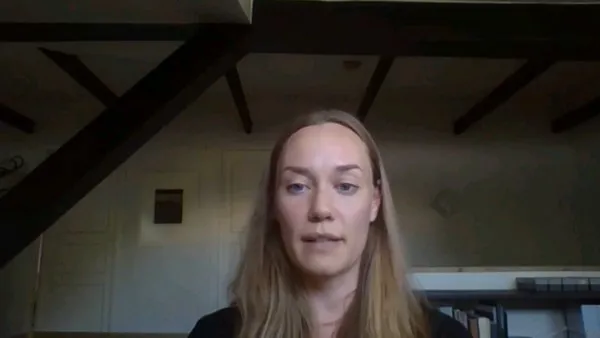How to ensure that your pest management is efficient? What is the best growing media to use? How can we affect the plant by changing the light spectrum? With the cannabis industry still being in its infancy, sharing such knowledge is an important factor. Therefore, BVB Substrates hosted an educational webinar last week, where attending growers received expert tips concerning every cannabis growth stage. 
On the right: Victor Gonzalez of BVB Substrates
The best IPM practices and growing media
According to Victor Gonzalez, Regional Sales Manager of BVB Substrates, it is important to start your preparation of pest management a month before any crops are brought into the facility. "Make sure the facility is clean and free of sources of contamination. It helps to avoid oscillating fans or plug-in dehumidifiers, as they can be a source of pests in your grow room. It is essential to ensure that you start with a clean mother plant and nursery stock. For any incoming plants, quarantine them and check at least a third of them for possible contamination."
Concerning the best types of growing media for cannabis, Gonzalez explains the different benefits and challenges. First up is rockwool. "Rockwool has a high water retention. Because it's a manufactured media, the pore size is consistent, but it has a low buffer capacity for water, pH, and nutrients. Some of the challenges with rockwool will be the large-scale disposal with recycling the media, along with the energy needed to produce the substrate." Gonzalez adds that coir-based media has excellent re-wettability and reduced shrinkage. "However, the challenge will be with salts, as it needs to be buffered and washed. Active growing media have high water retention, which produces an ideal environment for root development. It has a good buffering capacity for water, pH, and nutrients, and contains beneficial microbes to protect the plants." 
Tom Forrest of Puro
The future of cannabis cultivation
The next speaker was Tom Forrest, Co-Founder of Puro New Zealand. The company is the country's largest medicinal cannabis grower, growing on 10 hectares of certified organic outdoor production. Forrest mentions that it has been great to see the New Zealand and Australian cannabis markets growing. However, there are several challenges that cannabis companies have to deal with. "It's a highly regulated market that is still in its infancy." In order for companies to succeed, Forrest shared some advice. "There are so many approaches to growing cannabis. Your cultivation method and pricing will determine what market space you can play in. Also, don't just grow something, assuming people will buy it. You have to listen to the marketplace and cater to the demand." With the different worldwide regulations that can encourage or discourage you to cater to certain markets, Forrest emphasizes that it is important to be aware of the level of compliance you need.
"When it comes to the future of cannabis cultivation, I expect we will be looking much more towards automation," Forrest adds. "Right now, cannabis is very labor-intensive. Therefore, I think we'll see an adoption of more automation technology in everything: from more effective seed-raising machinery to cannabis-specific defoliation technology. Such innovations will be a steep improvement for the automation process in cannabis."
Stiina Kotiranta of Valoya
The influence of the light spectrum
Of course, the topic of lighting cannot be ignored in such a webinar. For this part, Stiina Kotiranta, Research Director at Valoya, was invited. The Finnish company has done a lot of research over the years, and Kotiranta was present to share some insights on the influence of the light spectrum on cannabis plants.
First of all, what are the effects of the different colors in the spectrum? "UV-light stimulates cannabinoid accumulation and helps grow pest-resistant plants. Blue light ensures compactness and stimulates cannabinoid accumulation. Green light penetrates lower parts of the canopy, stimulating flowering formations on lower branches. Red light drives photosynthesis resulting in plant biomass accumulation. Far-red light increases photosynthetic area and increases plant height, but decreases secondary metabolites."
"Depending on the growth stage, the grower often wants to see a specific trait," Kotiranta says. "For example, during cloning, the grower wants to see fast root development. During the flowering stage, growers are asking for the highest possible flower yield, a uniform crop, and a high cannabinoid and terpene composition. Depending on the growth stage, the best possible spectrum and light intensity is selected for the grower." During an experiment in Italy, Valoya compared HPS lighting to their Solray wide spectrum light. "Under the Solray, the cannabis plants were shorter, and the branches were stronger and could hold much more flower weight. When measuring the flower yield, this was 28% higher, and there was 24% more THC. Of course, these are some significant benefits for growers."
Sonny Moerenhout of Cultivators
Market developments
Lastly, Sonny Moerenhout, Managing Partner at Cultivators, was present to share his insights on the latest industry developments and the challenges that come along with them. "With more cannabis legislation, that results in new opportunities and challenges. Legislation is one thing, but implementation can take a long time. While the industry is developing rapidly, we notice that the challenge is the cultivation of pharma, with the high-quality standards of GMP being very strict. Moreover, there is limited professional expertise in large-scale, high-tech cultivation. Therefore, it is important to continue to learn together."
Another challenge is the variety in cultivation methods and systems, Moerenhout explains. "Growers are growing indoors, in greenhouses, outdoors, with drip irrigation or ebb and flood, etc. All those different aspects mean that different knowledge is required to make sure you get a good product out of it. On top of all of that, the regulatory changes do not facilitate a grower's work." Therefore, Cultivators can help licensed cannabis companies from the moment of their first business idea up to their daily operations.
Sign up for our daily Newsletter and stay up to date with all the latest news!
Subscribe I am already a subscriber
